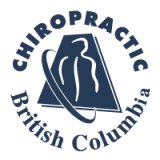
The British Columbia College of Chiropractors can't seem to stay out of the news as it continues to marginalize chiropractors who manage vertebral subluxation in a vitalistic, salutogenic manner.
As other Canadian Provinces fall in line with the example set by them, the BC College of Chiropractors (the Licensing & Regulatory Board) adopted more policies intended to restrict the free market trade of chiropractors by adding more absurd language to their Efficacy Claims Policy and the infamous Appendix "N".
In their continuing drive to limit the free speech of practitioners and implement more compelled speech, the College of Chiropractors of BC have added the following to their list of banned words and terms that must not be spoken or published to include:
Due to the absence of acceptable evidence supporting such claims, registrants must NOT represent to patients or the public that chiropractic:
(c) has any beneficial effect on fetal development or position such as: breech/breech turning or position and intrauterine/in utero constraint.
(d) has any beneficial effect on labour or birth such as: easier or shorter labour, preventing the need for medical interventions and preventing premature or traumatic birth.
(e) has any beneficial effect on hormone function or postpartum depression.
The College also went after Webster Technique stating it was setting:
". . . limits regarding the descriptions of this technique in registrant marketing to ensure patients will not be misled by untruthful or non-evidence-based information. As research into the Webster technique is still ongoing, the College desires to set limits regarding the descriptions of this technique in registrant marketing to ensure patients will not be misled by untruthful or non-evidence-based information."
They also adopted an amendment to restrict the advertising of the Webster Technique to the following definition:
"Webster Technique – a specific chiropractic sacral analysis and diversified adjustment for all weight-bearing individuals."
While the definition they adopted is a basic description of the Technique there is in fact evidence that Webster's Technique results in a variety of improved health outcomes. However, the Efficacy Claims Policy and Appendix "N" conjured up by the BC Regulatory Board from the policy of the Australian Health Practitioner Regulation Agency eviscerates the decades long model of Evidence Informed Practice by removing the incorporation of all levels of evidence in clinical decision making and instead limits "acceptable evidence" to randomized controlled clinical trials only.
The BC College then defines what evidence it will accept by removing any type of research where there are other possible explanations for treatment outcomes, the outcomes have not been replicated across multiple studies, they are not considered higher level evidence (RCT’s), basic science studies, case studies, self-assessment studies (Quality of Life Studies) and outcomes studies.
CLICK HERE for more on that story
CLICK HERE for more on these issues in Canada
